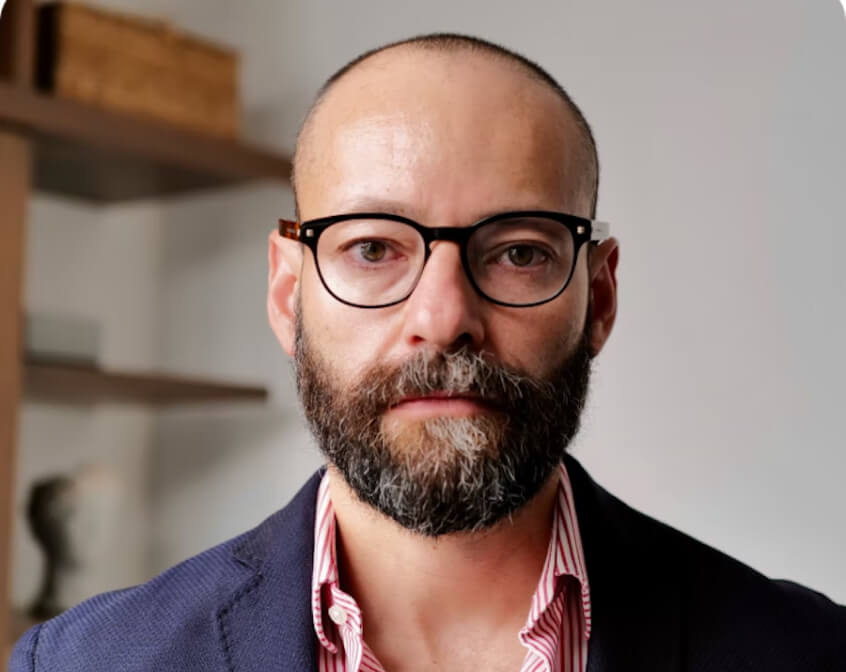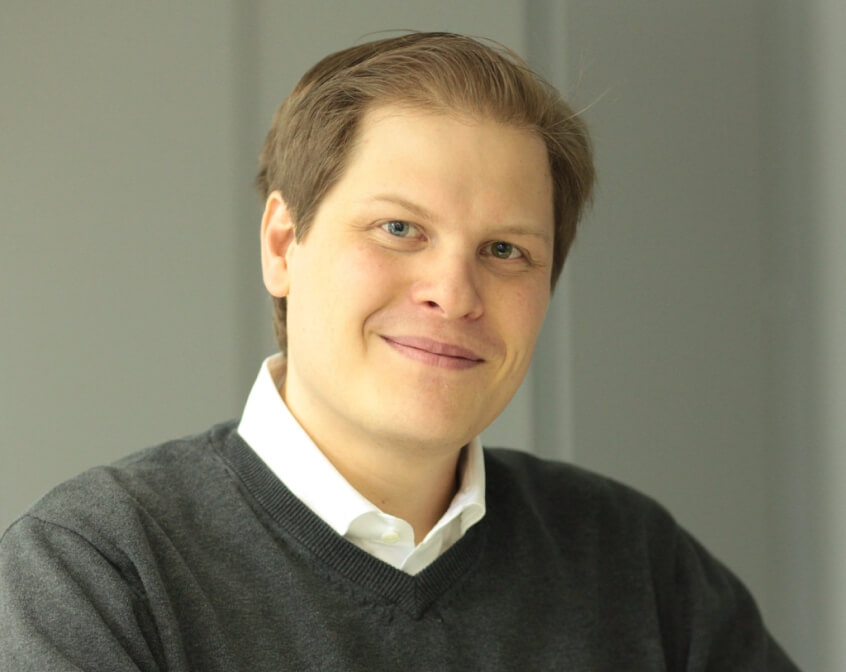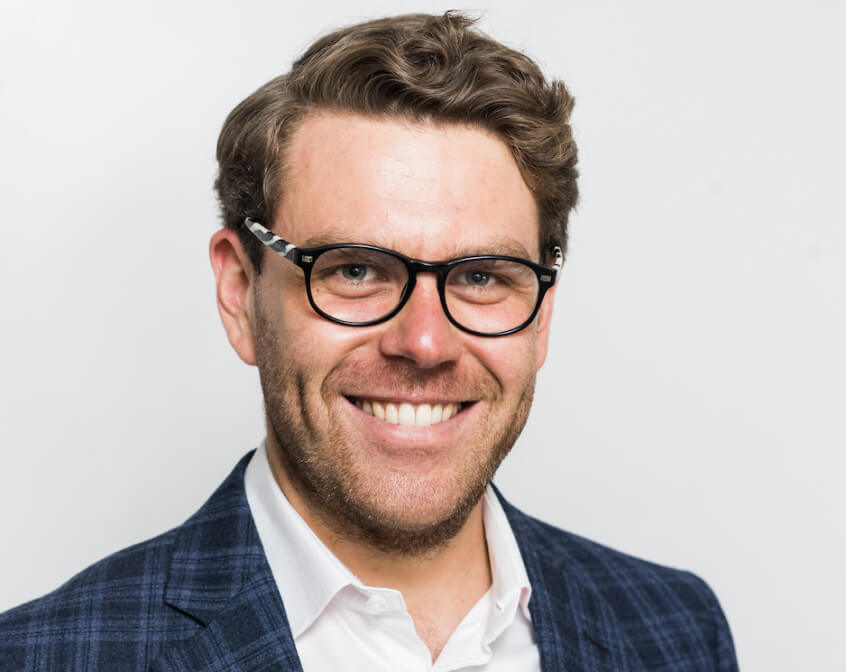As co-founder and CEO of Subskribe, Durga Pandey has built a rapidly growing SaaS startup that has revolutionized the modern quote-to-revenue software stack. With an extensive background in product management, Durga led core initiatives at Zuora, pioneered cutting-edge payment solutions at Google, and launched a top-ranking machine learning health application. He was also an early team member at Palo Alto Networks and Clearwell Systems, and served as the first Director of Product for what later became the Salesforce IoT Cloud.
Coming off a breakout year for Subskribe, Crew Capital’s Dylan Reider and Sonia Damian sat down with Durga to discuss his entrepreneurial path, the importance of long-term vision in business, balancing product development and product-market-fit, and how to manage investor relations in startups.
Building both products and companies
Durga’s entrepreneurial spirit took root during his college years when he co-founded Fast Forward India, a non-profit that leverages technology for India’s rapid advancement. “It was about impact…Taking academic theory into the real world to tackle genuine issues. And we succeeded, helping over 20,000 people,” Durga said.
Following college, Durga cut his teeth in the startup world as employee No. 35 at Palo Alto Networks, where he worked as a software engineer. He then moved on to Clearwell Systems, a software startup that quickly grew from $2 million to $85 million in revenue and was acquired by Symantec for roughly $400 million, Durga noted.
With several years of startup experience under his belt, Durga launched his own venture: A fitness app that eventually broke into the App Store’s top 100 in Health & Fitness category. For three years, he fueled the app’s growth to half a million users and secured a seed investment. Despite the initial success,, he learned the hard way that “When a CEO spends all his time writing code, the business is on borrowed time. I learnt you need to build the company, not just the product”, Durga said, echoing the words of Paul Graham.
Durga next joined Google as the lead product manager for payments on Chrome. Two years later, he joined Zuora as a Director of Product Management and led the company’s primary subscriptions and orders-related products. These experiences planted the seed for a comprehensive quote-to-revenue platform.
In 2020, Durga and his co-founders started Subskribe, aiming to revolutionize SaaS enterprises with the world’s first adaptive quoting, billing, and revenue platform. Subskribe has rapidly expanded from an early-stage startup into a company redefining its category.
“Our clients are our biggest fans; we make hard things easy for them every day. Leading SaaS companies are excited about their experience with Subskribe, especially regarding our quick and efficient onboarding process — a rarity in CPQ and billing,” he explained. “We’re not just chasing growth; we’re setting the standard for the SaaS sector.”
Vision and resilience: The power of long-term goals
Durga believes that founders need to focus on the bigger picture to thrive in the tumultuous startup landscape. “There’s the day-to-day motivation, and then there’s the long-term,” he said. “Financial outcomes by themselves are not motivating enough over a long period of time. You have to really like the problem space and you have to enjoy building a startup.”
He went on to explain that running a startup requires a different mindset that embraces acceptance of uncertainty, and sometimes, in his words, “pain.” “You must be firmly convinced there’s a problem out there and that you’re capable of solving it,” he said.
This conviction, coupled with the excitement from a passionate team and enthusiastic customers, creates a “virtuous cycle of dopamine happiness.” Durga advises founders to get comfortable with uncertainty, explaining that fear of the unknown can lead to debilitating stress. Building a startup “isn’t just about riding the highs, but also about finding a rhythm in the lows and thriving amid uncertainty.”
Customers and product go hand-in-hand
For Durga, true validation of product-market fit comes from the satisfaction and expansion of the customer base. “For an early stage startup, getting 10 customers that are live and satisfied is a critical benchmark that proves your product’s worth,” he said. Durga pointed out that founders often mistake product development for having achieved product-market fit.
“It’s not just about initially perfecting the product. It’s about evolving and improving fast as you continually learn from customer feedback,” he said.
True progress is made when the product adapts to customer needs, highlighting essential features that convert interest into loyalty. At Subskribe, the original goal wasn’t to sit in a room and invent a crazy new idea, but rather to refine and unite existing solutions to quote, invoice, and process payments into one superior product that addressed a well-defined need. This approach allowed the startup to prioritize high-quality, enterprise-level features from the start, drawing on past learnings from companies like Palo Alto Networks.
“Our product may come from an early-stage company, but it impresses customers with its depth and maturity, often leading them to assume we’re much larger than we are,” he noted.
Make sure the Ideal Customer Profile meets the business
Durga takes a strategic approach to working with design partners: “Choose and listen to your design partners carefully. Don’t get distracted by their size or reputation,” he said.
Oftentimes, large companies do business with other large companies because it’s safe. But they go looking to startups for answers when they’re unhappy and have a problem to be solved. The key, according to Durga, is to collaborate with partners who reflect your future customer base, ensuring feedback is both relevant and actionable.
“Our aim with design partners was actually to refine the design. Some were so large that an early-stage sale wasn’t feasible. The true goal was to perfect the product, leveraging partners who could candidly point out where we could improve,” he said.
On defining the Ideal Customer Profile (ICP), Durga urges precision. “Don’t be too broad. You might think you’ve narrowed down your ICP, but it could still be too vague. Find the specific niche that resonates, as that’s where rapid growth will happen,” he said. “You’re looking for the sub-segment within that ICP that is resonating well, where if you put in effort, you can grow the customer base quickly. That doesn’t happen just by sitting in a room.”
While incorporating customer feedback is crucial, founders must walk a tightrope between absorbing customer feedback and maintaining the original product vision. “Founders need to be problem-solvers first, weighing the importance and frequency of the issues customers face,” he added.
To differentiate between key features and nice-to-haves, try to make a sale. “When you ask for an opinion, you get many. But when you ask for a sale, you get the truth.”
Fundraising strategy: The quest for the right “Yes”
When it comes to funding, Durga preaches financial prudence: “Raise more than you think you’ll need, spend less than you’ve planned.” He advises planning for at least an 18-month runway and being vigilant about cash flow.
“You’ll need cash sooner than you expect. That’s the blind spot for too many startups — they don’t grasp the harsh truth that investors aren’t necessarily your lifeline. When the coffers start to empty, there’s no guarantee they’ll be eager to refill them. It varies with each business and investor, sure, but there’s wisdom in being overly cautious. It’s like that book ‘Only the Paranoid Survive’ by Andy Grove — take it to heart,” Durga said.
Additionally, selecting a lead investor is a critical process that Durga compares to hiring: “It’s about finding a good fit for the long run. Take the time to know your potential lead investors and vet them thoroughly. Having multiple term sheets allows you to compare without pressure.” He also encourages founders to recognize the non-monetary value of investors.
“They’re more than just funding — they’re assets with knowledge, connections, and experience,” he said. He recommends creating a matrix to map out each investor’s strengths and to manage your expectations to be realistic.
Business success requires strategic hiring
“Before becoming a founder, you might think startups are all about the product. But once you’re in the founder’s shoes, you realize your role is primarily that of a recruiter and a salesperson, not just a product builder,” Durga said. “If you do a good job and hire the right people who are as good as you or better than you…it changes the fate of the company.”
Durga went on to explain that founders brute force things and can easily find themselves putting in 14-hour days. That model can’t work forever, and often leads to burnout. Delegation is key, and surrounding oneself with the right people is the only way to succeed.
“Your friend circle is never enough to build the team,” he said. Expanding beyond one’s immediate network to build a large candidate pool and a diverse team is imperative to scale effectively and mitigate biases. A large candidate pipeline and a rigorous selection process are key.
“We run through this refined hiring process and provide white-glove service. That means we’re prompt, and highly responsive. After a candidate gets through the process, we make sure we give them a very competitive offer and work hard to close.” he added.
Balancing quality and quantity in hiring
When it comes to candidate screening, Durga warns against settling for the first good candidate that comes along. “Interview at least 10 highly qualified candidates to learn what ‘best’ looks like, and set a benchmark for the role.” At the same time, he advises founders to set a realistic hiring bar.
“Don’t look for the unicorn every time. Be pragmatic and evaluate against a set of clear criteria. You have seen good candidates before. You know what a strong person looks like,” he said.
The ideal candidate for Durga “is someone very ambitious, but it’s not just ambition for themselves. They’re ambitious for the company. They want that company to do well. People like that don’t like bureaucracy, they don’t like things being slow and they don’t like their companies being slow. And so they’re often frustrated at large companies. They’re more competent than most people think, and given the opportunity, they’ll bloom. They also need to have an appetite for risk and a strong sense of ownership. I respect someone who is confident in their opinion but open to being wrong.”
A few of Durga’s favorite questions to ask candidates include:
- How do you want your new job to be different from the last one?
- What are things at work that demotivate you?
- What upsets you?
Entrepreneurship demands endurance and strategy
Durga compares his entrepreneurial journey to climbing a mountain. “There are parts where you just have to slog through without thinking too much,” he said. “You have to just work towards that inspiring goal. It’s a long hike, and you don’t give up.”
Durga emphasized maintaining a healthy work-life balance to persevere through tough periods. It’s not just about endurance, either; it involves staying productive, and consistently reassessing the product’s evolving relevance.
“Many times, people give up without giving it enough,” he said. And when it comes to setbacks like fundraising, he knows resilience is critical. “Eventually, you just need one investor, right? One investor alone can change the game. So keep pushing forward and allow time for the startup to gain momentum. Persistence is the name of the game.”
Related Articles

Spenser Skates’ Journey from MIT to Building the Category-Defining Digital Analytics Company
As part of our founder interview series, Crew Capital’s Co-founder, Daniel Dines, sat down with Skates to have a conversation…

Vidal Gonzalez – Building Early-Stage Engineering Teams

Fundraising, AI Advancements, and the Quest for Product Market Fit with Vasco Pedro
In the following Crew Capital interview with Dylan Reider and Sonia Damian, Vasco Pedro, the CEO and co-founder of Unbabel…







